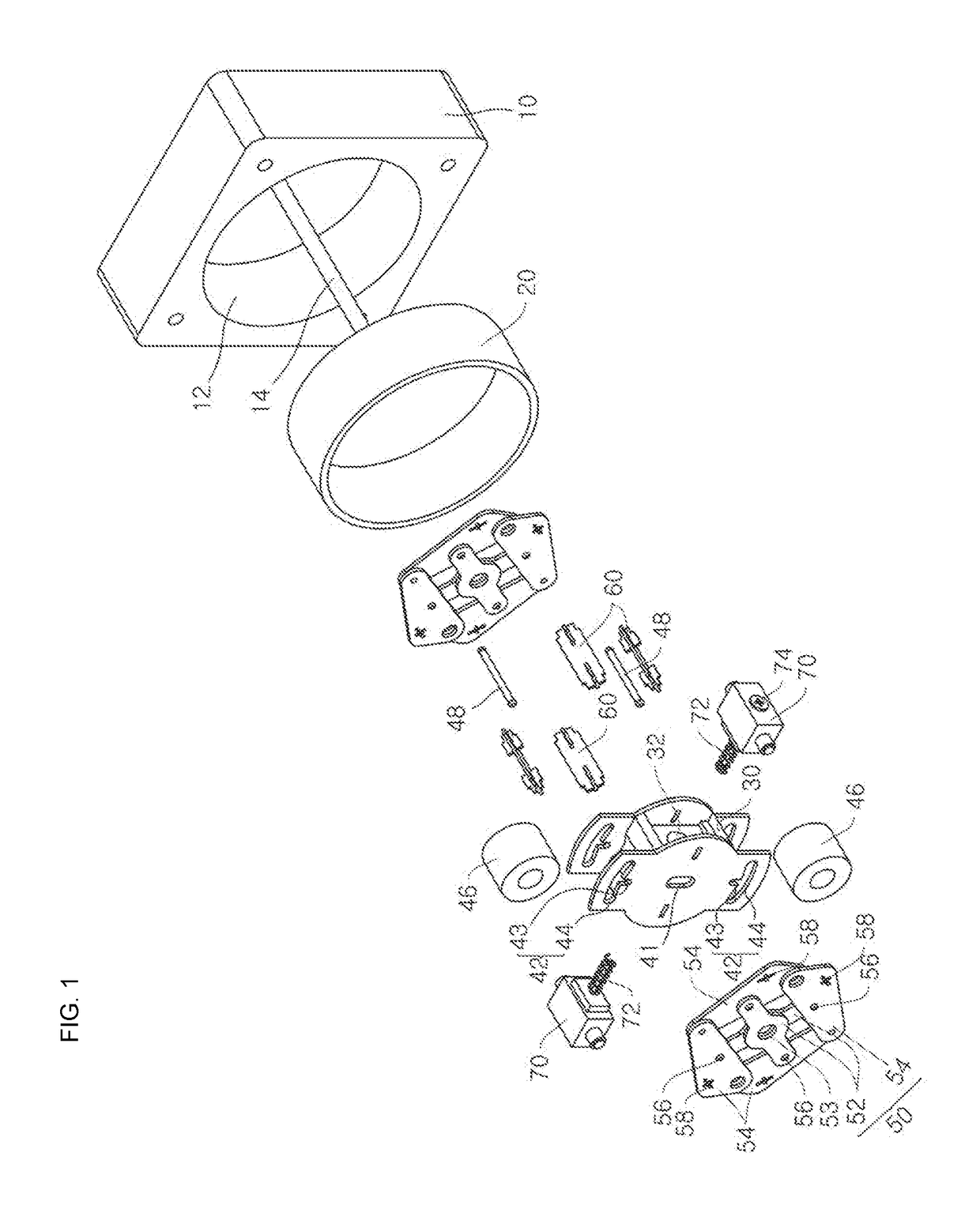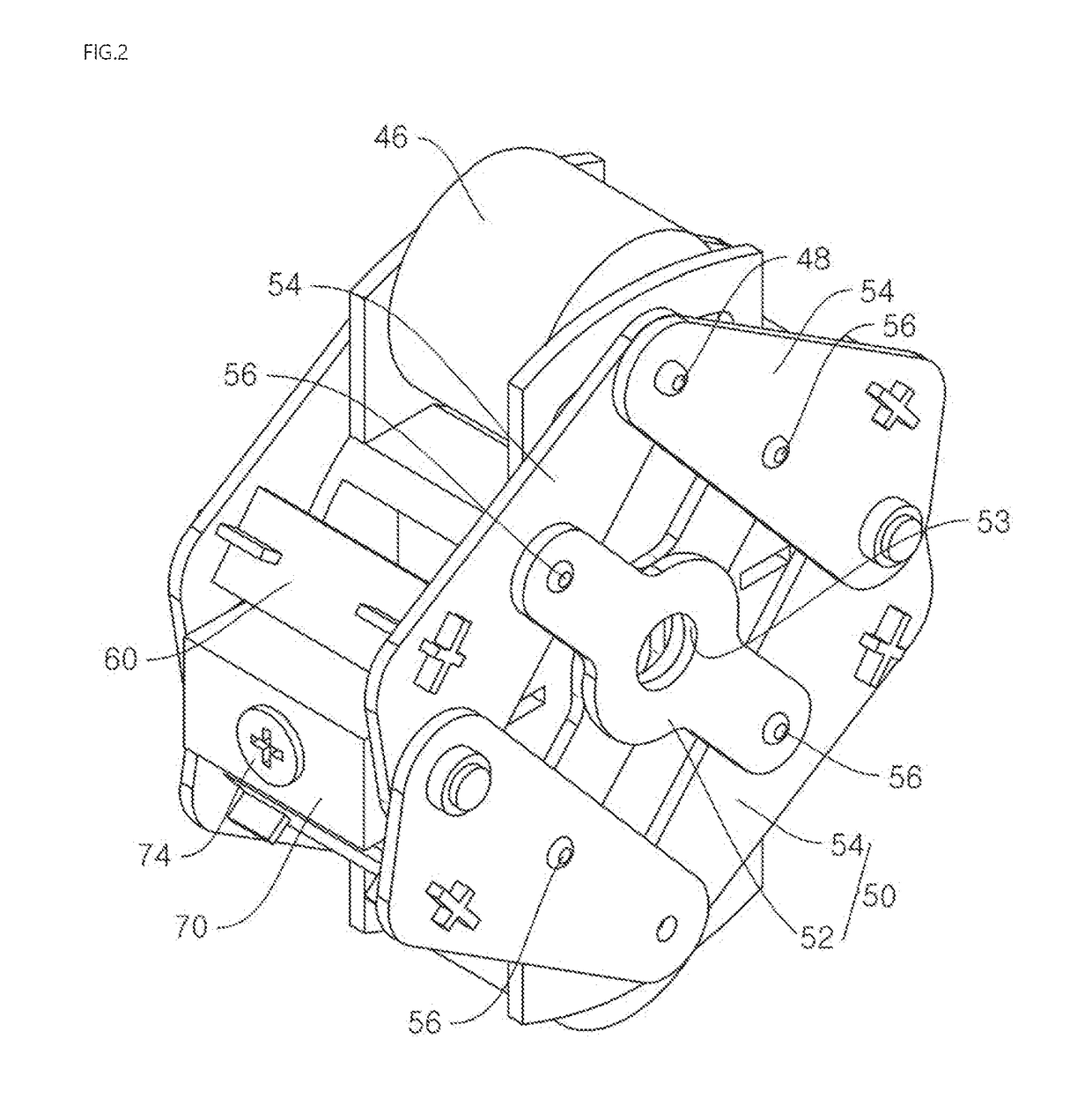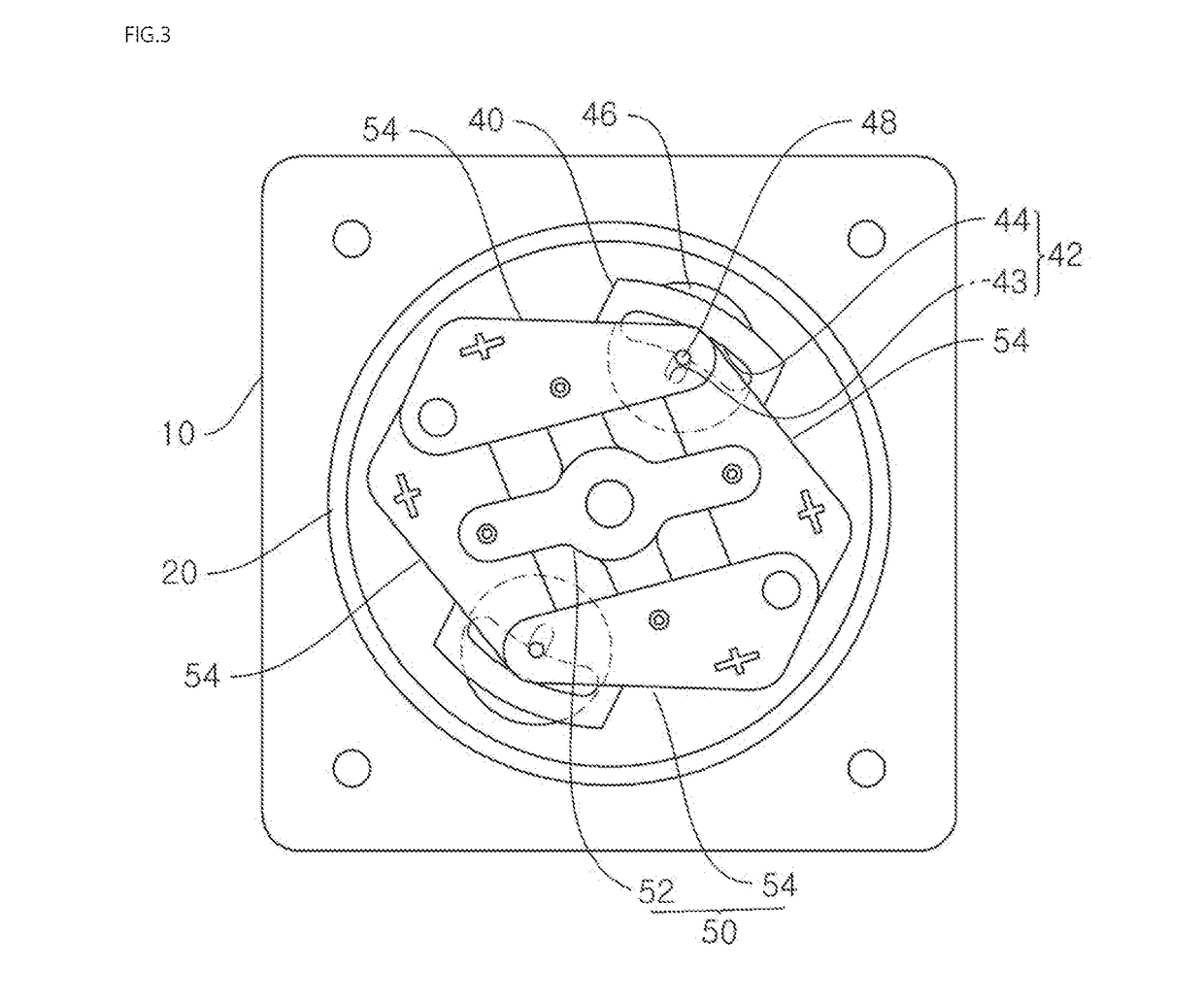Non-powered passive braking device using centrifugal force
- Summary
- Abstract
- Description
- Claims
- Application Information
AI Technical Summary
Benefits of technology
Problems solved by technology
Method used
Image
Examples
Embodiment Construction
[0021]Exemplary embodiments of the present invention will be illustrated in the accompanying drawings and described in detail in the written description, but the embodiments may be changed and have many alternative forms. However, the present invention is not limited to particular modes of practice, and it should be appreciated that all changes, equivalents, and substitutes not departing from the spirit and technical scope of embodiments are encompassed in the embodiments. In the description of the embodiments, certain detailed descriptions of the related art will be omitted when it is deemed that the detailed descriptions unnecessarily obscure the essence of the inventive concept.
[0022]Although the terms first, second, etc. are used to describe various components, the components are not limited by the terms. The terms are used to only to distinguish one component from another.
[0023]The terminology used herein is for the purpose of describing particular embodiments only and is not i...
PUM
 Login to View More
Login to View More Abstract
Description
Claims
Application Information
 Login to View More
Login to View More - R&D
- Intellectual Property
- Life Sciences
- Materials
- Tech Scout
- Unparalleled Data Quality
- Higher Quality Content
- 60% Fewer Hallucinations
Browse by: Latest US Patents, China's latest patents, Technical Efficacy Thesaurus, Application Domain, Technology Topic, Popular Technical Reports.
© 2025 PatSnap. All rights reserved.Legal|Privacy policy|Modern Slavery Act Transparency Statement|Sitemap|About US| Contact US: help@patsnap.com



